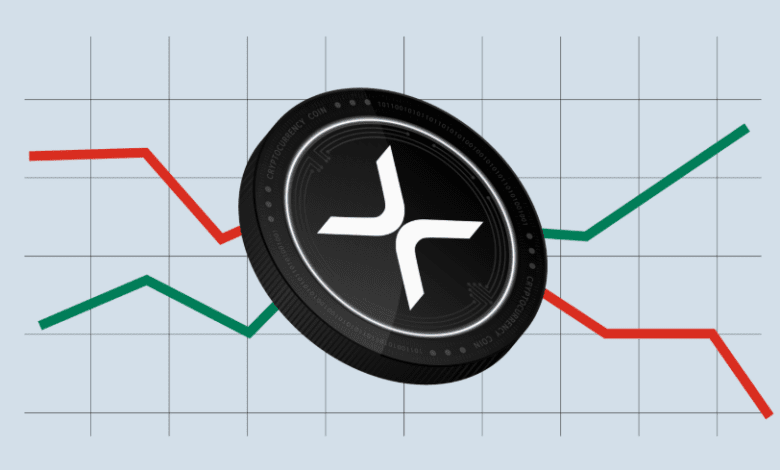XRP Price USD: The Key Differences from Other Cryptocurrencies

Introduction
Cryptocurrencies have revolutionized the way we think about money and transactions. Among the many digital assets that have gained prominence, XRP stands out for several reasons. Its XRP price in USD is closely watched by investors and traders alike, as it continues to maintain a unique position in the crypto market. But what sets XRP apart from other cryptocurrencies, such as Bitcoin, Ethereum, or Litecoin? This article will explore the key differences, particularly focusing on the price dynamics of XRP in USD and xrp price usdt.
What is XRP?
XRP is the native digital asset of the Ripple network, which is designed to facilitate fast, low-cost cross-border transactions. Unlike many cryptocurrencies that are primarily used for speculation or investment, XRP was created with the specific goal of improving the global payments system. Ripple’s blockchain technology offers a scalable and efficient platform for transferring value, making XRP a vital part of the network’s ecosystem.
XRP Price USD vs. Other Cryptocurrencies
The price of XRP in USD has historically been different from the price of other major cryptocurrencies, such as Bitcoin (BTC) or Ethereum (ETH). While Bitcoin and Ethereum have gained prominence largely through speculative investment and technological innovation, XRP has a more practical, real-world application. As a result, its price fluctuations are often tied to both market trends and the adoption of Ripple’s payment solutions by financial institutions.
1. Utility and Purpose
One of the main differences between XRP and other cryptocurrencies is its use case. While Bitcoin was originally created as a decentralized alternative to traditional currency, XRP’s primary focus is on enhancing the efficiency of international financial transactions. Ripple, the company behind XRP, has partnered with numerous financial institutions around the world to offer fast, secure, and low-cost cross-border payments.
In contrast, Bitcoin, Ethereum, and other cryptocurrencies are primarily used for speculative investment, and their value is often determined by market sentiment, speculation, and adoption rates. The XRP price USD is more directly linked to the practical use of the cryptocurrency in the financial sector, making it less volatile than other digital currencies.
2. Market Cap and Supply Dynamics
The market cap of a cryptocurrency is a major factor in determining its price and overall value. XRP’s market cap is typically lower than that of Bitcoin and Ethereum. However, it is essential to consider the supply dynamics when evaluating XRP.
XRP has a total supply of 100 billion coins, a figure that is far higher than Bitcoin’s capped supply of 21 million BTC. This high supply puts downward pressure on the XRP price in USD, especially in comparison to Bitcoin, whose limited supply helps maintain its scarcity value. While XRP’s large supply makes it more accessible, it also means that a greater number of XRP coins are required to achieve the same market capitalization as Bitcoin or Ethereum.
3. Centralization vs. Decentralization
Another key difference between XRP and other cryptocurrencies lies in their degree of centralization. Bitcoin and Ethereum are often praised for their decentralized nature, with a wide distribution of nodes that govern the networks. In contrast, Ripple and XRP are often criticized for being more centralized. The company behind Ripple holds a large portion of the XRP tokens, which has led to concerns about the centralization of control over the network.
This centralization can influence the XRP price in USD, as the market may perceive Ripple as having more influence over the price compared to other cryptocurrencies. However, Ripple’s centralization is also one of the reasons why its network can process transactions more efficiently than decentralized blockchains.
4. Regulatory Challenges
XRP has faced significant regulatory scrutiny, particularly from the U.S. Securities and Exchange Commission (SEC). The SEC filed a lawsuit against Ripple Labs in 2020, alleging that XRP should be classified as a security, which has led to uncertainty in the market. The outcome of this case could have a significant impact on the future of XRP price USD.
Bitcoin and Ethereum, on the other hand, have generally been treated more favorably by regulators, with both cryptocurrencies being largely classified as commodities. This regulatory clarity has contributed to the stable growth of Bitcoin and Ethereum, while XRP price USDT has been more volatile due to ongoing legal challenges.
5. Price Stability and Volatility
The XRP price in USD is generally less volatile than that of Bitcoin or Ethereum, which are known for their massive price swings. XRP’s more stable price can be attributed to its utility in cross-border payments, which tends to be less speculative in nature compared to other cryptocurrencies. The XRP price USDT, for example, may show smaller price fluctuations relative to Bitcoin, making it a potentially more predictable asset for traders and investors.
However, it’s important to note that the XRP price can still experience significant volatility during times of market turmoil or when there are major announcements related to Ripple or the broader crypto market.
6. Adoption and Partnerships
The adoption of XRP by financial institutions and payment providers plays a significant role in its price movement. Ripple has successfully formed partnerships with numerous banks and payment services around the world, including Santander, American Express, and PNC. These partnerships demonstrate the growing real-world use of XRP in the global payments ecosystem.
Other cryptocurrencies, such as Bitcoin and Ethereum, have been adopted primarily as digital assets for investment, rather than for practical use in the financial sector. While Ethereum has found use in decentralized finance (DeFi) and smart contracts, it does not have the same level of institutional backing as XRP. The XRP price in USD often reflects the success of Ripple’s partnerships and its ability to gain traction within the traditional financial industry.
XRP Price USDT: What It Means for Traders
For traders and investors in the cryptocurrency market, the XRP price USDT (XRP to Tether) is an important metric to watch. Tether (USDT) is a stablecoin pegged to the U.S. dollar, and its use allows for a more stable trading environment. The price of XRP in relation to USDT can offer insights into market sentiment and help traders make informed decisions.
When the XRP price in USDT is stable, it suggests that market conditions are relatively calm, and the asset is not experiencing large swings. However, when the price fluctuates significantly, it could indicate market instability or news events that have impacted investor sentiment. By monitoring the XRP price USDT, traders can gain insights into the broader cryptocurrency market and adjust their strategies accordingly.
Conclusion
In conclusion, XRP price in USD and its differences from other cryptocurrencies lie in its unique purpose, market dynamics, and utility. Ripple’s focus on improving cross-border payments sets it apart from Bitcoin, Ethereum, and other digital assets. With a larger supply, centralization concerns, and regulatory challenges, XRP’s price movements tend to be less volatile but still impacted by global market conditions.
For those looking to invest or trade in XRP, understanding these key differences can provide valuable insights into the long-term potential and risks associated with XRP. Whether you’re tracking the XRP price in USD or XRP price USDT, staying informed on market trends, Ripple’s partnerships, and regulatory developments will be crucial in making smart investment decisions.
Frequently Asked Questions (FAQs)
1. What makes XRP different from Bitcoin and Ethereum?
XRP is designed for fast, low-cost cross-border transactions, while Bitcoin and Ethereum are often used for speculation or investment. XRP’s utility in the financial sector distinguishes it from Bitcoin and Ethereum.
2. How does XRP’s market cap affect its price?
XRP has a large total supply of 100 billion coins, which puts downward pressure on its price. In contrast, Bitcoin’s limited supply of 21 million coins helps maintain its scarcity value.
3. Is XRP decentralized?
Unlike Bitcoin and Ethereum, XRP is considered more centralized due to Ripple Labs controlling a significant portion of the tokens. However, this centralization allows for faster transactions on the network.
4. Why is XRP’s price more stable than other cryptocurrencies?
XRP’s price tends to be more stable due to its practical use in cross-border payments and its institutional backing. This makes it less speculative compared to other cryptocurrencies like Bitcoin.
5. How do regulatory issues impact XRP’s price?
Ongoing regulatory challenges, such as the SEC lawsuit, have created uncertainty for XRP’s price. A favorable or unfavorable ruling could significantly influence XRP’s value in USD.
6. How can I track the XRP price in USDT?
You can track the XRP price USDT through various cryptocurrency exchanges and financial platforms that provide real-time price updates, including Binance, Coinbase, and Kraken.



